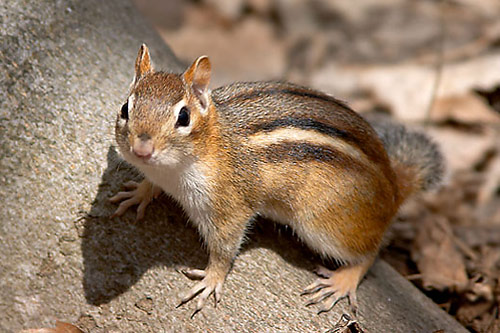There are three different species of ground squirrel, or chipmunks, found in Illinois. Each of these chipmunks nest underground in burrows and have cheek pouches. They can be found in grasslands, prairies, and wooded areas that are not prone to flooding. Read more to find out about Illinois chipmunks.

Eastern chipmunk: These can be found most places in Illinois but are very uncommon in southeastern Illinois. They are identified by their red brown fur, five dark brown stripes and contrasting light brown stripes on its back, dark tail, and light underside. They primarily feed on bulbs, nuts, seeds, fruits, flowers, plants etc. This species stores their food in their burrows and come back to it later. They are a generally solitary species and only socialize during mating season. They do not enter a true hibernation in the winter but enter a period of dormancy.
Thirteen-lined ground squirrel: They are sometimes known as the striped gopher or leopard ground squirrel. This species has thirteen alternating brown and white stripes and white spots in between. They occur in the northern 2/3 of Illinois and are particularly active on warm days. This species feeds on grasses, weeds, seeds, plants, and insects. They are known for their surveying behavior in which they stand on their hind legs to examine the surrounding area.

Franklin’s ground squirrel: These occur in the northern 2/3 of Illinois but can be uncommon due to their threatened status. They are listed as a protected species in Illinois under the Endangered Species Act. They are brownish gray in color, with light speckles across their body, light undersides, and solid gray heads. This species is omnivorous and eats anything ranging from insects to eggs, plants, small birds, and frogs. These squirrels are also generally solitary.
If chipmunks or ground squirrels are making a home on your property, damaging your gardens, or causing burrowing damage, do not hesitate to call animal control to remove them safely.




